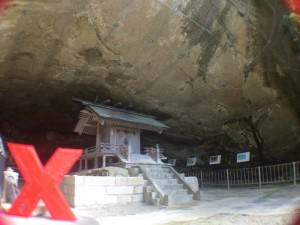[English follows Japanese]
TEDxHimi まであと100日。
ファウンダーの川向です。
そういや昨年もこんなブログ書いてたと思います。
TEDxHimi2016も無事に開催することができました。まずは陰で支えてくれたスタッフ、素晴らしアイデアを惜しみなく出してくれたスピーカー、パートナ企業、そして単なる聴衆者でなくアクティブに参加してもらったパーティシパントのみなさん、ありがとうございました。
いよいよみんな本格始動です!
TED(テッド)、TED conferenceから始まりました。
1984年に、リチャードソールワーマンがカリフォルニア州モントレーで極身内のサロンとしてスタートしました。
その後、現代表のクリスアンダーソンが引き継ぎ、ネットにTED Talkを無料公開し、爆発的に世界に広まりました。
最近では、NHKのスーパープレゼンテーションやネットでご存じの方も多くいらっしゃると思います。(だからこのブログに来ていただいてるんだと思います。)
TEDは単なる講演会じゃない。
ネットやTVでTEDのことを知った人は、たぶんトークの場面しか見てないので、単なる意識高い講演会だと思われてるところがあります。
特に日本だと壇上の講演者と参加者には壁があり、講演のスタイルにもよるけど、なかなか双方の交流がないのですね。講演終わって名刺交換の列ができるぐらい。参加者同士の交流もなく。
でも、TED(テッド)・TEDx(テデックス)はまったく違うんです。参加者の多くの方は何かしらそれぞれのコミュニティ(それが会社であったり地域社会であったり所属する団体であったり)に対して行動に移してる人が多く、登壇者のアイデアに負けず劣らず素晴らしいアイデアをもっていらっしゃいます。
こういう人たちが一同に集まり、またそれぞれが触発しあうことで、さらに進化発展していく場が、TED・TEDxなのです。
TEDxKyoto2012立ち上げに始まり、世界銀行の年次総会として日本国と共同開催したTEDxSendai、TEDxTokyo やTEDxTohokuなど国内の他のTEDxイベントをサポートしていくうちにそれぞれ特徴があって面白いなぁと思うようになりました。 そして2014の本国のTEDのサブイベントTEDActive2014に参加して初めて、それぞれのTEDxが目指している頂が分かったんです。
ステージ演出やセッションの間にあるブレイクタイム、様々なアクティビティを見て、どこどこのTEDxはこれを目指してたんだなぁ~、とか分かるようになりました。
登山でいろんなルートがあってそれぞれ見える景色は違うんだけど、目指してる頂はみんな一緒、みたいな感じですね。
その根底にあるのは、アイデア。
TEDの理念、Ideas worth spreading を大切にしてるということ。
そして、そのアイデアを聞いて終わりにするんじゃなくって自分事として持ち帰ってそれぞれのコミュニティに還元すること。
その想いがあるからそれぞれ自分の住む町で、TEDxイベントを開催してるんだなーと強く思いました。
氷見からアイデア発信する意義って何だろう?
ぼくが氷見で一番影響を受けた網に入った魚の8割を逃がす、自然と共存した、里山と里海のHUBになる定置網の文化を、TEDというプラットフォームに乗せて世界に発信したい。
このフィロソフィーからTEDxHimi2016のテーマを ”PassivelyActive” にしました。
今年はこの Passive を深堀させていき、自分たちの、氷見の内面や原点に迫っていこうと考えました。
Power of Inner Origin(仮題) とでも言いましょうか。
氷見の人にとっては生まれたときからあるので当たり前と思われがちだけど、実はすごいことって沢山あるんです。
自分たちがいまいる氷見のOriginを再発見してみようと歴史を探求していくと、縄文時代にまでたどり着きました。

みんなが小学校の教科書で必ず目にしたことがある縄文式土器も、氷見の朝日貝塚で出土しました。
大正7年に大境洞窟が発掘されるまで、縄文時代と弥生時代、どっちが古いか分からなかったり。
今回は縄文時代を切り口にして、自分たちで体験し、TEDxHimi2017を作り上げていけたらと思いました。
縄文式土器ってどうやって作ってたの? わら縄ともみ殻で野焼きにしてたかも? この時期は、デブガツオが取れるから、藁で焼くときにタタキにできるかも?とか。w 昨年に引き続き自分たちでどぶろく造った味はどうなんだろう? タタキに会うかなぁ~、とか。
食いしん坊の妄想は止まりません。
次のTEDxHimiをみんなで一緒に作りませんか?
貴方のワクワクする得意なことをTEDxHimiに注ぎ込んでいただけませんか?
まだまだボランティアスタッフも、企業パートナも募集中ですよ。
“100 Days Left Before TEDxHimi 2017”
Hi everyone! I am Masa Kawamukai, the founder of TEDxHimi. I feel like I was just writing a blog entry like this for last year’s event.
Last year, TEDxHimi 2016 was a success. I would like to express my gratitude to our staff members who supported us behind-the-scenes, the speakers who willingly shared their amazing ideas with us, our business partners, and to all the participants who were more than audience members, but active participants in the event! We are again preparing for a full-fledged event this year!
TED and TED conference were initially started by Richard Saul Wurman in Monterrey, California as a salon for a small group of people. It was then handed over to Chris Anderson, the current curator, who made “TED Talks” available for free online. This quickly made TED well-known around the world. More recently, Japanese audiences may be familiar with TED through NHK’s TV program called “Super Presentation (スーパープレゼンテーション)” or via the Internet (and that’s probably how you found this blog).
TED is not just about lectures. Those who have learned about TED on the Internet or through TV know that TED is about sharing ideas and promoting social awareness.
At lectures in Japan, there is usually an invisible “wall” between speakers and participants. Very little interaction occurs between the two. At the end of the lecture, people lineup trying to exchange business cards, and even then, the interaction between the participants is limited. TED and TEDx are different. Participants at these events have already started putting their ideas into action in their communities (such as at their company, local community, or an organization they belong to). TED and TEDx are places where proactive people get together and share their thoughts and support, thus keeping these ideas and people constantly evolving and developing through these interactions.
As I got involved in supporting more and more TEDx events, starting from the setup of TEDxKyoto 2012, to TEDxSendai, which was held to do an annual meeting of the World Bank, and with TEDxTokyo and TEDxTohoku, I found it very interesting that every TEDx event had a unique quality that made it different from the others.
And when I participated in TEDActive 2014 held in Canada, I obtained a better understanding of what each TEDx event was aiming for. Different speakers, different talks, stage performances which break time between sessions, various activities… It is all like mountain climbing. The routes we take and scenes along the way are different, but we are all aiming to reach the same summit.
What lies beneath it all is the TED’s philosophy, ”Ideas worth spreading.” I came to the realization that that’s why people hold TEDx events in their city. Because during these events, we are not just listening to people’s ideas. We take their ideas and incorporate them into our own and share them with our communities back home.
Why is it important to share ideas from Himi? Using TED as a platform, I wanted to share a part of Himi culture called Teichi-ami (set net fishing) which has made such an impact on me. Teichi-ami is a method of fishing in which 80 percent of the fish caught escape the nets and go into the ocean. Coexisting with nature, it contributes to the central part of sato-yama and sato-umi (biologically productive and diverse mountains and coastal areas created through human interaction). The philosophy of teichi-ami coincided with the theme of TEDxHimi 2016: “Passively Active”. At our 2017 event, we would like to explore deep into this “passiveness” and get closer inside the origin of ourselves and Himi. Perhaps a working title could be the “Power of Inner Origin.”
There are many valuable things in Himi, although they may seem like nothing special for the people of Himi since they are accustomed to having them around. As I explored Himi’s history to rediscover its origin, I reached the Jomon period. Do you remember seeing the photos of Jomon-shiki doki (rope-marked potteries) in your elementary school textbook? Many of those potteries were actually discovered from Asahi Kaizuka (shell-mounds) in Himi. Ozaki Cave is another important historical site discovered in Himi in 1918. Its discovery became the first evidence that demonstrates Jomon period occurred before Yayoi period.
This time, we are hoping to discuss Himi through life in the Jomon era and create TEDxHimi 2017 in collaboration with our own experiences. My thoughts keep developing. How did ancient people make Jomon-shiki potteries? Were they baking potteries by Noykai (traditional Japanese controlled grassland burning method) using straw ropes and chaff? Now it is the season of Katsuo (bonito) in Himi. Maybe we can also cook “Katsuo no Tataki” when we bake them with straw? How will Doburoku (a kind of sake) taste if we make it on our own again like we did last year? Will Tataki be there at the event as well? As a food lover, I just cannot stop my imagination.
Join us to create a TEDxHimi 2017 event together. Would you like to inspire us with something that you love and is exciting for you? We are still welcoming more volunteers and business partners.

Follow Us
ソーシャルメディア